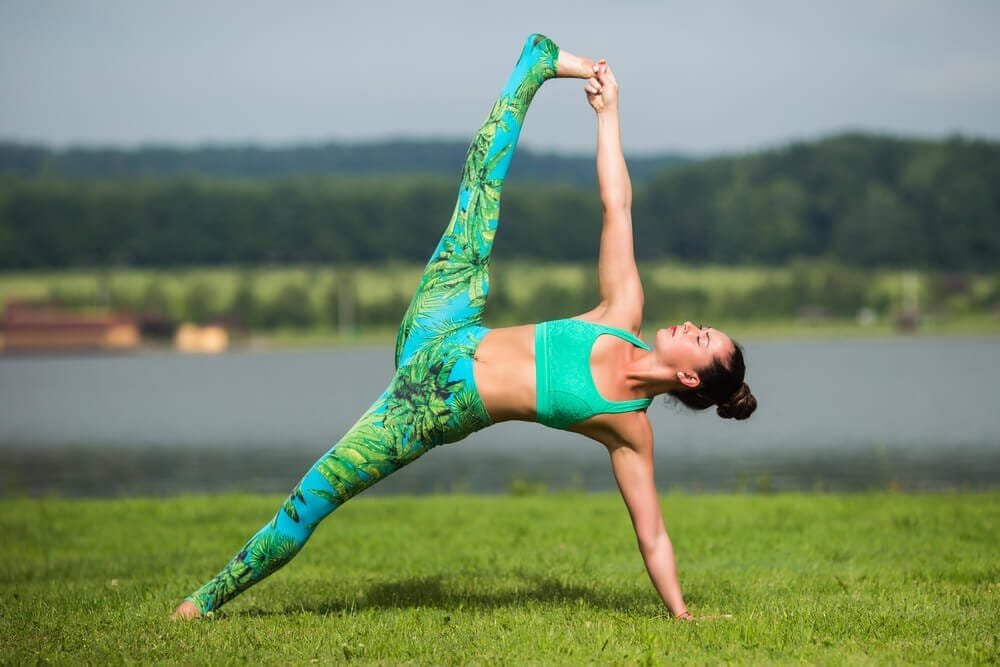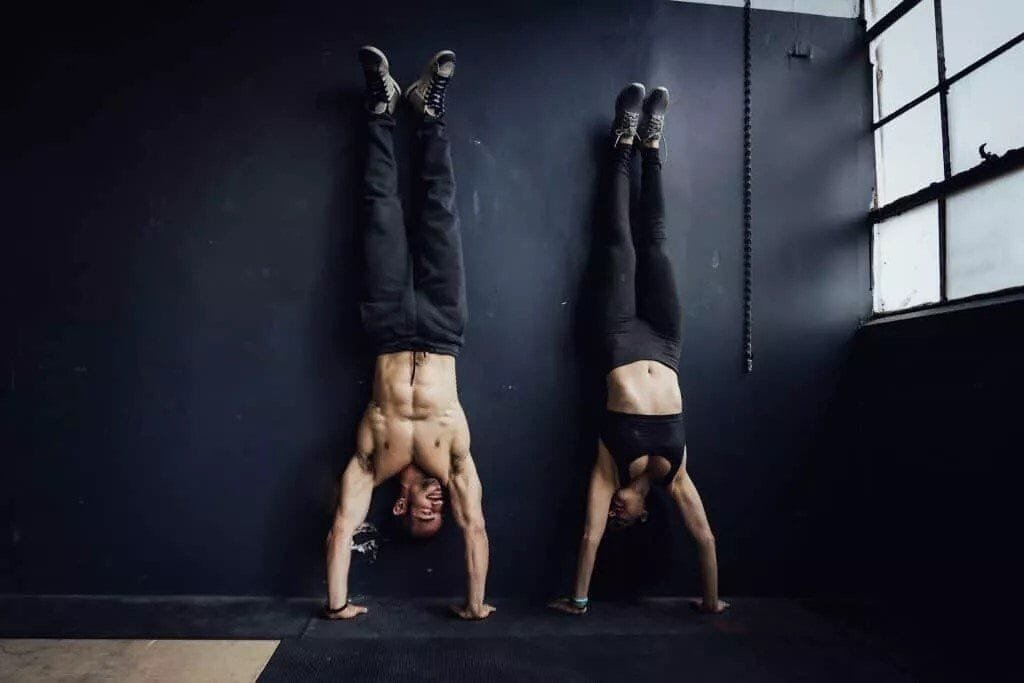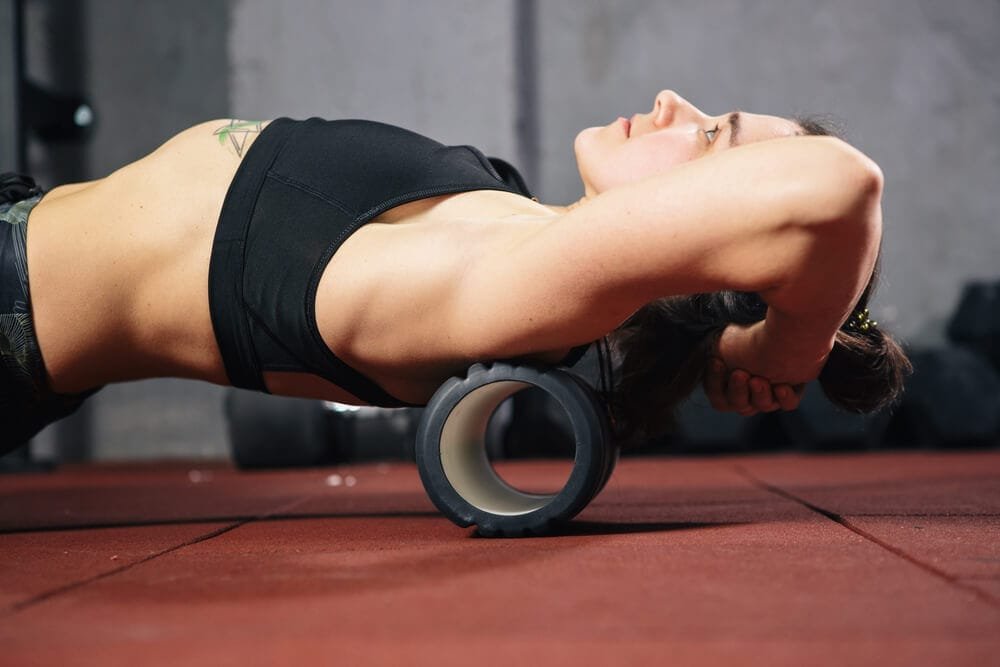Warm-ups and cool-down exercises are often highly neglected in the world of calisthenics, but the benefits they provide make them more than worth doing.
This is especially the case for those of you who perform advanced moves or strenuous workout routines, as the chances of getting injured go up exponentially.
There are a variety of reasons that make warm-up and cool-down exercises in calisthenics vital for anyone who wants to stay injury-free and perform to the best of their abilities, and we are going to be going through everything you know regarding this subject in this article.
Table of Contents
Benefits of Warm-up Exercises
First things first, let’s take a look at why warm-up exercises are so important. There are many reasons why warm-up exercises are so crucial for every calisthenics athlete, so much so that trying to go through them all would take an entire article all by itself.
However, three are three warm-up exercises that stand out above the rest because of their powerful effects, and this is what we are going to be discussing in this section of this article.
Increased Flexibility and Range of Motion

One of the main benefits of warm-up exercises is that they can improve your flexibility. Being flexible might not be that high up on your priority list if you are a beginner calisthenics practitioner, but there are a plethora of advanced calisthenics moves that require you to be pretty flexible to perform them with good form.
It’s also just good to be flexible in general. The first time you go to do squats after finishing a proper warm-up, you will notice the difference immediately.
Warm-ups do not only improve your flexibility and range of motion in the short term. No, warm-ups can provide long-term benefits when done consistently, and they can make general life much more comfortable.
Being flexible is always a good thing, and if you want to sink into your squats easier and perform advanced calisthenics moves way down the line, then you might just want to consider throwing in a few warm-up exercises at the beginning of your workout.
Reduced Risk of Injury
Another enormous benefit to introducing warm-up exercises into your calisthenics routine is that they can reduce your risk of being injured. It is a commonly known fact that performing a warm-up before working out can reduce the chances of becoming injured considerably, and calisthenics is certainly no exception.
Not only can staying injury-free allow you to avoid a ton of struggle and strife, but it can also help you maximise your results from training. Think about it; you are not going to be able to optimise your calisthenics training if you are injured more often than you are healthy.
Being injured less can allow you to get much more out of your training, and because of this, it makes warm-up exercises essential for anyone who wants to perform to the best of their abilities. It really is that simple.
Whether you do it for yourself or to optimise your training, staying injury-free is vital in the world of calisthenics, and this makes performing a quick warm-up before your workout incredibly valuable to any calisthenics practitioner.
Improved Performance

Lastly, warming up before getting into your primary calisthenics routine can boost your performance. Slowly warming up your muscles can allow them to handle heavier loads for more reps during your workout, and over a long period, the difference this could make in your results would be outstanding.
That’s right; You do not need a whole barrel full of supplements to get a slight boost in performance – just start warming up. Of course, the word “slight” is the keyword here; you are not going to be breaking new world records just by incorporating a warm-up routine. However, that’s not to say that the difference is negligible, and it may just be able to give you that extra edge you are searching for.
No matter if you want to gain muscle and strength, lose fat, or perform new and interesting calisthenics exercises, warming up can allow you to get the most out of your body.
Types of Warm-up Exercises for Calisthenics Workouts
Despite what you may think, there are a ton of different types of warm-up exercises, all of which can achieve the desired effect of getting your blood pumping and preventing injuries.
Now, we will take a look at the three different types of warm-up exercises as well as what each type is good for. Just remember to pick the warm-up type that feels the most comfortable/natural for you. There is no point in starting a warm-up routine that you are not going to stick to within a few weeks.
Dynamic Stretching
First up, we have dynamic stretching. Dynamic stretching is a type of stretching in which a person moves their body in a controlled manner through a full range of motion.
Unlike static stretching, which involves holding a stretch for a set period, dynamic stretching involves movement which helps with both flexibility and blood flow.
There are a ton of dynamic stretching routines out there that you can follow if this type of warm-up sounds appealing to you – a quick google search will bring up endless results.
Dynamic stretching can be done anywhere at any time, and it is a go-to for many calisthenics practitioners and sports athletes alike.
Light Cardio

If the idea of performing a warm-up routine sounds horrible to you, then you may want to consider doing some light cardio. Light cardio, such as low-impact jogging or relaxed biking, can be an incredible way to get warmed up before working out, and it just feels much more natural to most people.
Of course, the downside to light cardio is that you either have to be at a gym or be willing to go for a short bike/jog before your workout, so this is something that you will have to take into consideration when looking at this option.
Nevertheless; light cardio is just as good as even the best of warm-up routines, and you could not go wrong if you choose to incorporate it into calisthenics regimen.
Bodyweight Exercises
Lastly, we have bodyweight exercises. Just as is the case with regular weight lifting, warming up by performing your usual exercises but with lighter loads is a phenomenal way to get yourself warmed up, as it allows you to get all the benefits of performing a warm-up routine without ever feeling like you need to change things up too drastically.
Transferring this to calisthenics, it could mean that you do a set of push-ups on your knees before doing a set of weighted-pull-ups, or it could mean that you do a few burpees to get the blood flowing around your entire body.
You truly do have absolute freedom to do what you want with this one – as long as it gets the blood pumping and isn’t going to negatively impact your actual workout, you can’t go wrong.
Benefits of Cool-Down Exercises
Most people assume that the majority of the benefits from warm-up and cool-down exercises come from the warm-up, and while this may be true to some extent, cool-down routines are still overwhelmingly important.
Cool-down exercises are not just a nice way to relax after a hard workout – they can provide a variety of benefits that range from increasing your comfort to improving your recovery time.
This makes cool-down exercises just as essential as warm-up exercises, and if you want to have the optimal calisthenics experience, then you will want to begin incorporating them into your workouts immediately. Let’s take a look at some of the most prominent benefits of cool-down exercises.
Reduced Muscle Soreness
One of the main benefits that cool-down exercise can give is reducing muscle soreness. Cool-down exercises can help improve circulation, which can speed up recovery and help deliver oxygen and nutrients to the muscles. This can help reduce muscle soreness and promote healing.
This will be especially beneficial to those of you who have only just begun your calisthenics journey. Muscle soreness can be a real issue when you first start training, so much so that it may hinder your ability to perform regular activities.
Cool-down exercises can help you prevent and remedy this pain, allowing you to go about your usual business without a hitch. This can not only just improve your quality of life, but it can also increase the chances of you sticking with calisthenics.
Dealing with soreness is never a pleasant experience, and while it will go away after a few weeks of following a routine, it can be somewhat off-putting. Cool-down exercises can prevent this problem almost entirely, making muscle soreness barely even a factor.
Improved Recovery Time
You can’t talk about the multiple benefits that cool-down exercises can bring without mentioning improved recovery time. Cool-down exercises can help your body recover from workouts by gradually bringing your heart rate back to normal. This can help reduce muscle soreness and stiffness, allowing you to return to your workout routine faster.
Once again, this is particularly beneficial for new calisthenics athletes, but it is also useful for practitioners all across the board. Knowing you are going to be fully recovered for your next workout is a good feeling, as it lets you know that you are getting the maximum benefit from every single workout.
This is precisely why so many high-level athletes spend millions of dollars trying to find out the best recovery methods. Luckily, you do not have to be a millionaire to get access to all of the benefits that cool-down exercises can bring.
The fact that cool-down exercises can improve recovery time makes them incredibly valuable, and you will want to take advantage of them if you want to get access to this benefit.
Improved Flexibility
Another incredible benefit of cool-down exercises is that they can improve your flexibility. A cool-down routine that includes stretching can help improve flexibility and range of motion, reducing the risk of injury and improving your performance in future workouts.
We have already said everything there is to say about improved flexibility when going over the benefits of warm-up exercises, so we won’t bore you by giving the same spiel.
Just know that being flexible can be advantageous for both everyday life as well as when working out, and you should not overlook this benefit when considering incorporating warm-up and cool-down exercises into your routine.
Types of Cool-Down Exercises for Calisthenics Workouts
As is the case with warm-up exercises, there are also quite a few different ways you can cool down after a workout.
Depending on where you are, what equipment you have access to, and your preferences, the type of cool-down exercises you will want to perform will vary drastically, so it’s important to keep this in mind when going through the cool-down types we are about to mention.
Let’s take a look at the different types of cool-down exercises.
Static Stretching
Static stretching is probably what you imagine when you think about what a cool-down routine would look like.
Static stretching is simple, easy, and effective, and if you just want a quick way to get access to many of the benefits that cool-down routines can bring, then performing just a few static stretches after your workout would be incredibly beneficial.
It might not be too fancy or interesting, but static stretching gets the job done. All you need is five minutes after a workout and a space as wide as your body to do static stretching effectively.
Light Cardio
On top of being an incredible way to warm up, light cardio can also act as an exemplary method to cool down. Light cardio is not all that taxing on the body, and compared to what you put yourself through in your regular calisthenics sessions, it is very low impact.
This means that you can use light cardio to both warm up and cool down, making this option extremely versatile. If you just want the simplest warm-up/cool-down routine possible, then light cardio is going to be perfect for you.
Although, it is important to remember that light cardio is only supposed to be used to get your blood pumping and increase flexibility, so you need to make sure you are not fully exerting yourself when using it to warm up or cool down.
Foam Rolling

If you are looking for a way to take your recovery to the next level, then foam rolling is going to be your best bet. Foam rolling is a form of self-massage that involves using a foam roller to apply pressure to various muscle groups. The foam roller is used to apply pressure to specific points on the body, which can help to relieve tension, increase circulation, and improve flexibility.
Foam rolling is considered effective because it helps to break down knots and trigger points in the muscles, which can cause pain and reduce the range of motion. By applying pressure to these areas, foam rolling can help increase blood flow, promote healing, and reduce tightness, making it extraordinarily effective for use as a cool-down routine.
It is worth noting that foam rolling does require you to either go out and buy a foam roller or enrol at a gym that allows its users to use it. This is something to keep in mind if you are on a budget or want to spend as little money on calisthenics as possible. However, you can pick foam rollers up for next to nothing, so this expense is going to be more than worth it for most people.
Foam rolling is as good as it gets when it comes to cooling down after a workout, and if you want the best recovery possible, then you may just want to invest in a good foam roller.
You can also consider a lacrosse massage ball, for those areas which can be harder to target with a foam roller.
Incorporating Warm-Up and Cool-Down Exercises into Your Calisthenics Routine
Now that we have taken a look at the many benefits that come with incorporating warm-up and cool-down exercises into your routine as well as the different types of warm-up/cool-down exercises there are, we can begin to talk about how you can effectively implement them into your calisthenics routine.
You might think that the answer to how to incorporate warm-up and cool-down exercises into your calisthenics routine is rather obvious; you just stick them at the beginning or the end of your workout, right? Well, yes. But there are a few things you should know before starting this process.
If you program warm-ups and cool-downs into your routine ineffectively, you could end up missing out on some of the benefits they provide, or even worse, you may end up scrapping the idea altogether.
Here’s how to incorporate warm-up and cool-down exercises into your calisthenics routine seamlessly and effectively.
Make Them a Part of Your Regular Routine
Developing a new habit can be difficult. This is precisely why so many people vow to start an exercise routine and give up just a few weeks later. But that’s not to say it can’t be done.
Habits are a well-researched phenomenon, and we now have a pretty good understanding of how we can build new habits with as little strain as possible. So, what is the best way to build new habits? Well, you just want to do whatever new habit you want over and over again every day until it sticks.
In terms of warm-ups and cool-downs, this simply means that you should introduce them into your workouts and make sure that you do them every single time you work out. This includes those days when you already feel pretty warmed up or relaxed after a workout – skipping days is a surefire way to ensure that your new habit doesn’t stick.
After a while, warm-ups and cool-downs will just come naturally to you, and you will no longer have to make a conscious effort to remember to do them. It’s going to take some work and those first 2-4 weeks may feel a little tedious, but it is going to be more than worth it.
Make Changes Based on Your Workout Intensity
Another tip that will help you incorporate warm-up and cool-down exercises into your workouts is to make changes based on your workout intensity. Feel a little under the weather and just want to get a quick workout in to say you have done it? Well, you might also want to cut your warm-up and cool-down routines in half.
Alternatively, if you are feeling super strong and want to push yourself much more than usual, you may want to extend your warm-up and cool-down sessions to facilitate the extra stress.
Scaling your warm-ups and cool-downs to your workout intensity is a phenomenal idea – it just makes sense. You don’t want to be doing a half-hour warm-up session for a low-intensity forty-five-minute workout, and you certainly do not want to do a ten-minute warm-up for a high-intensity workout that lasts two hours.
Changing your warm-ups and cool-downs to match your workouts is going to save you time and further reduce the risk of injury, making it essential for any calisthenics practitioner who wants to optimise their program.
Conclusion
We hope we have been able to give you a better insight into why performing warm-up and cool-down exercises in calisthenics is so important. The benefits that come from performing well-thought-out warm-ups and cool-downs are just too good to pass up, and your calisthenics journey is going to go much smoother if you decide to implement these practices into your routine.
If you follow all the pointers we have given you today, you should be able to seamlessly integrate warm-ups and cool-downs into your calisthenics practice with ease. It might seem a little strange at first and you may even feel like you are wasting your time, but in the long term, you will be much better off.

Founder of www.calisthenics-101.co.uk. Training calisthenics since 2012.
Currently working on: 30 second one-arm handstand, muscle-up 360, straddle planche.
